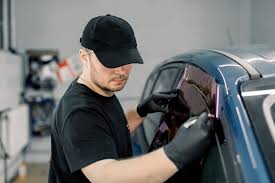Vehicles are a vital component of modern society, facilitating the movement of people and goods across the globe. From bicycles to airplanes, the diversity of vehicles is vast, each designed for specific functions and environments. This article delves into the alquiler de coches fuerteventura, types, technology, and impact of vehicles on our daily lives.
A Brief History of Vehicles
The journey of vehicles began thousands of years ago with the invention of the wheel around 3500 BC in Mesopotamia. Early vehicles included carts pulled by animals, which significantly enhanced transportation capabilities.
- The Industrial Revolution (18th-19th Century): This era brought about significant advancements in vehicle technology. The steam engine powered the first locomotives and steamships, revolutionizing travel and trade.
- The Birth of the Automobile (Late 19th Century): The invention of the gasoline-powered car in the late 1800s marked the beginning of personal and mass transportation as we know it. Henry Ford’s assembly line in the early 20th century made automobiles more accessible to the general public.
- Modern Era (20th Century to Present): The development of electric and hybrid vehicles, alongside advancements in safety, comfort, and efficiency, continues to shape the automotive industry today.
Types of Vehicles
Vehicles can be categorized based on their purpose, design, and energy source. Here are the main types:
- Land Vehicles
- Automobiles: Cars designed for personal transportation. They come in various forms, including sedans, SUVs, and hatchbacks.
- Motorcycles: Two-wheeled vehicles that offer mobility and often appeal to enthusiasts.
- Bicycles: Human-powered vehicles that promote fitness and eco-friendly transportation.
- Trucks and Vans: Vehicles designed for transporting goods or large groups of people.
- Buses: Used for public transportation, buses can accommodate a large number of passengers.
- Water Vehicles
- Boats: Small vessels used for leisure, fishing, or transport on rivers and lakes.
- Ships: Larger vessels designed for long-distance travel across oceans, including cargo ships and cruise liners.
- Submarines: Specialized watercraft capable of underwater travel, primarily used by military and research organizations.
- Air Vehicles
- Airplanes: Fixed-wing aircraft designed for long-distance travel, ranging from small private planes to large commercial jets.
- Helicopters: Rotorcraft capable of vertical takeoff and landing, used for a variety of purposes including medical transport and law enforcement.
- Drones: Unmanned aerial vehicles used for surveillance, photography, and delivery services.
- Specialty Vehicles
- Agricultural Vehicles: Tractors and combines designed for farming tasks.
- Construction Vehicles: Equipment like bulldozers and excavators used in construction and infrastructure development.
- Emergency Vehicles: Fire trucks, ambulances, and police cars designed for rapid response in emergencies.
Vehicle Technology
Advancements in technology have transformed vehicles over the years, leading to increased efficiency, safety, and convenience. Key technologies include:
- Internal Combustion Engines: The traditional power source for most vehicles, converting fuel into mechanical energy.
- Electric and Hybrid Vehicles: These vehicles use electric motors alongside traditional engines, reducing emissions and improving fuel efficiency.
- Autonomous Vehicles: Self-driving technology is revolutionizing transportation, with companies investing heavily in research and development.
- Connectivity: Modern vehicles often feature infotainment systems, GPS navigation, and connectivity to smartphones, enhancing the driving experience.
- Safety Features: Innovations like anti-lock braking systems (ABS), lane departure warnings, and adaptive cruise control are becoming standard in new vehicles.
The Impact of Vehicles on Society
Vehicles have significantly influenced society, shaping economies, urban planning, and lifestyles.
- Economic Growth
- The automotive industry contributes billions to the global economy, providing jobs and stimulating related sectors such as manufacturing and services.
- Urban Development
- The rise of automobiles has led to the development of suburbs, highways, and infrastructure, altering how cities are designed and how people interact with their environment.
- Environmental Concerns
- While vehicles have improved mobility, they also contribute to pollution and climate change. The push for sustainable transportation solutions is more critical than ever, leading to innovations in electric vehicles and public transit systems.
- Social Changes
- Vehicles have changed how people connect, travel, and conduct business. They enable greater mobility, allowing for easier access to education, healthcare, and job opportunities.
Conclusion
Vehicles are integral to modern life, shaping economies, cultures, and environments. As technology continues to evolve, the future of transportation promises to be exciting, with sustainable and innovative solutions on the horizon. Understanding the diverse world of vehicles enhances our appreciation for the conveniences they provide and the challenges they pose, making it essential to consider their role in shaping a better future for all.
